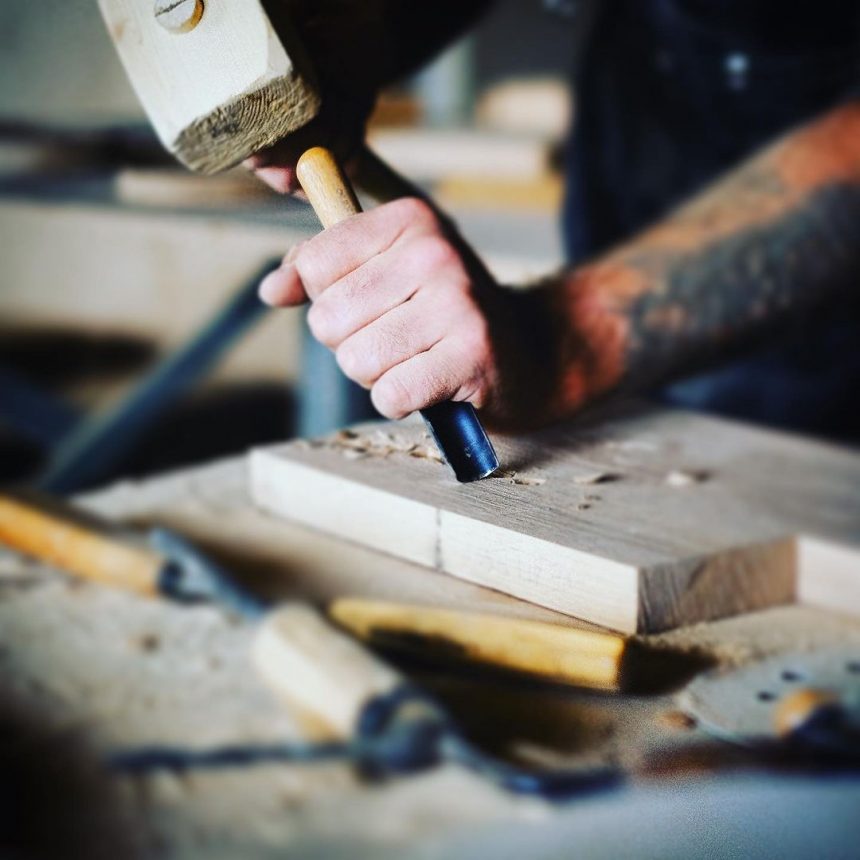The half-circle cutters made from files are easy to harden. The hardening is done in two operations. During the first, the cutter is heated to a cherry red glow in a gas burner or other method. A well-cleaned kitchen gas torch is quite suitable for heating such cutters. The heated tool is quickly lowered into the water, the vessel with which is held as close to the burner as possible, and immediately a hand movement is made to move the tool sharply and thus get rid of the vapor shell that forms around the cutter and interferes with the contact of the metal with water.
The second operation is to soften the brittle-hardened steel. The cutter heats up only slightly, which is controlled by the color of the undercurrent. Therefore, the scale formed on the cutter from the first operation should be removed (to shine) by light polishing on a fine sandpaper (at least a chamfer), trying not to spoil the sharpening. Heat on the flame an area of 1-2 cm – the width of a little finger – from the end of the cutter. The cutting tip itself must not be heated, which can overheat quickly and unexpectedly. The tip should be heated by the internal heat coming from the rod. You have to watch the color change in the polished surface. One should catch the moment, when the cutting tip starts to turn cherry color after blue color and dip it sharply into the water (preferably with a layer of oil on the surface).
Then the cutter is tried on the wood and sharpened again clean. If the cutting edge is pitted when carving, this indicates the need to increase the temperature of the second heating to a straw-colored whitewash.
A “crumpled” cutter blade is an indication of a steel grade that is not suitable for hardening or an unsuccessful operation: not enough first heating temperature, slowing down when dipping in water, slow cooling due to a vapor layer formed in the cutter groove, too high tempering temperature (secondary heating).
This method is only suitable for carbon steel, from which files are made, for example. In other cases, it is better to ask for help from a familiar specialist, because it is not possible to get a high enough temperature for hardening high-quality steels at home. For the cutter who has the opportunity to heat the tool in a muffle furnace or forge, here are some basic recommendations. The grade of steel can be roughly determined by the spark on the grinding wheel in a darkened place. Thus, a white bunch of sparks with separate stars tells about the carbon steel, which requires low heating during hardening – up to 780°С (cherry-red glow) and tempering at transition of color from violet (for cutting tools) to straw (for work with a mallet). Heat treatment of such steel can be performed at home on a gas burner.
A short bundle of dark red sparks almost without stars is produced by R18 high-speed steel. This steel requires a high quenching temperature of about 1270 ° C, which corresponds to a bright white glow. This can only be achieved in a large muffle furnace or in a forge furnace.
The P9 high-speed steel has a slightly lower hardening temperature (about 1230°C). It is hardened with a light yellow glow, and gives reddish orange sparks with a few stars on the sharpening disc.
Other alloyed steels (chrome gives hardly distinct yellow sparks, tungsten gives well-defined red ones) are hardened at light-red glow (820-900°C). Alloy steels are better quenched in oil or water heated to 70°C.
Approximately the same temperature is required for annealing before cutting: alloyed steels are heated up to 1000°С, fast-cutting ones – up to 1200°С. After heating, they must cool down slowly with the furnace.
It should be noted that high and prolonged heating leads to the burnout of carbon. Therefore, it is better not to do tool hardening with a very thin section, and after hardening the sharp decarburized tip is removed on a block or sharpener with cooling, do not be afraid also to do tool sharpening, especially the first one, until the burr is formed along the whole length of the blade. For the same reason, the first trial threading with a sharpened tool sometimes does not yield the desired result.
